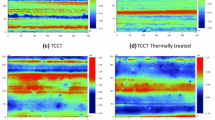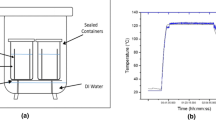Abstract
This article investigates the mechanical properties of a laboratory-sized clamp fabricated from used aluminum beverage cans as part of effort to achieve a cleaner environment and add value. Used aluminum beverage cans, ferromanganese, and varied percentages of ferrosilicon (0.94%, 2.28%, 3.35%, and 4.82%) were synthesized by casting. The cast samples were then subjected to the clamp’s relevant functional mechanical properties test. The results of the tests show that the Al-4.82% Si specimen demonstrated the highest ultimate tensile strength and elastic modulus. The wear resistance of the alloy also improved as the amount of silicon added increased. However, the total elongation decreased with an increase in the weight percentage of silicon due to an increase in the fraction of silicon particles present within the alloy matrix. The improved mechanical properties demonstrated by the aluminum-silicon alloy impact positively on the functionality of the three-prong extension clamp. This development has the potential of creating an immense boost in the global effort at achieving a cleaner environment.










Similar content being viewed by others
References
M. Urdea, L. Parv, and N.B. Lupulescu, Rec. Adv. Appl. Theor. Mech. In press, http://www.wseas.us/e-library/conferences/2009/tenerife/MECHANICS/MECHANICS-25.pdf.
Sigma-Aldrich, Laboratory Clamps and Support (2002), http://www.sigmaaldrich.com/content/dam/sigma-aldrich/docs/SigmaAldrich/Brochure/1/laboratory-clamps-and-supports.pdf.
Aluminium: The International Aluminium Institute. https://www.foeeurope.org/sites/default/files/publications/13_factsheet-aluminium-gb.pdf (2013). Cited on 29th December, (2014).
A. Gesing, JOM 58, 18 (2004), http://www.tms.org/pubs/journals/JOM/0408/Gesing-0408.html.
S.K. Das and W. Yin, JOM 59, 83 (2007).
J. Gitlitz, Americans Trashed 50 Billion Aluminum Beverage Cans in 2001 (Washington, DC: Container Recycling Institute, 2002).
K.A. AlSaffar and L.M.H. Bdeir, J. Eng. Dev. 12, 157 (2008).
D.R. Askeland, Aluminium: Science and Engineering of Materials, 3rd ed. (Oxford, U.K.: StanleyThornes Ltd., 1998). http://en.wikipedia.org/wiki/Beverage. Cited on 29th Decemeber, (2014).
B. Collins, T.J. Napier-Munnt, and M. Sciaronet, J. S. Afr. Inst. Min Metall. 75, 103 (1974).
Author information
Authors and Affiliations
Corresponding author
Rights and permissions
About this article
Cite this article
Sekunowo, O.I., Lawal, G.I., Durowaye, S.I. et al. Mechanical Characteristics of an Extension Clamp Fabricated from Used Aluminum Beverage Cans. JOM 67, 894–900 (2015). https://doi.org/10.1007/s11837-014-1264-9
Received:
Accepted:
Published:
Issue Date:
DOI: https://doi.org/10.1007/s11837-014-1264-9




